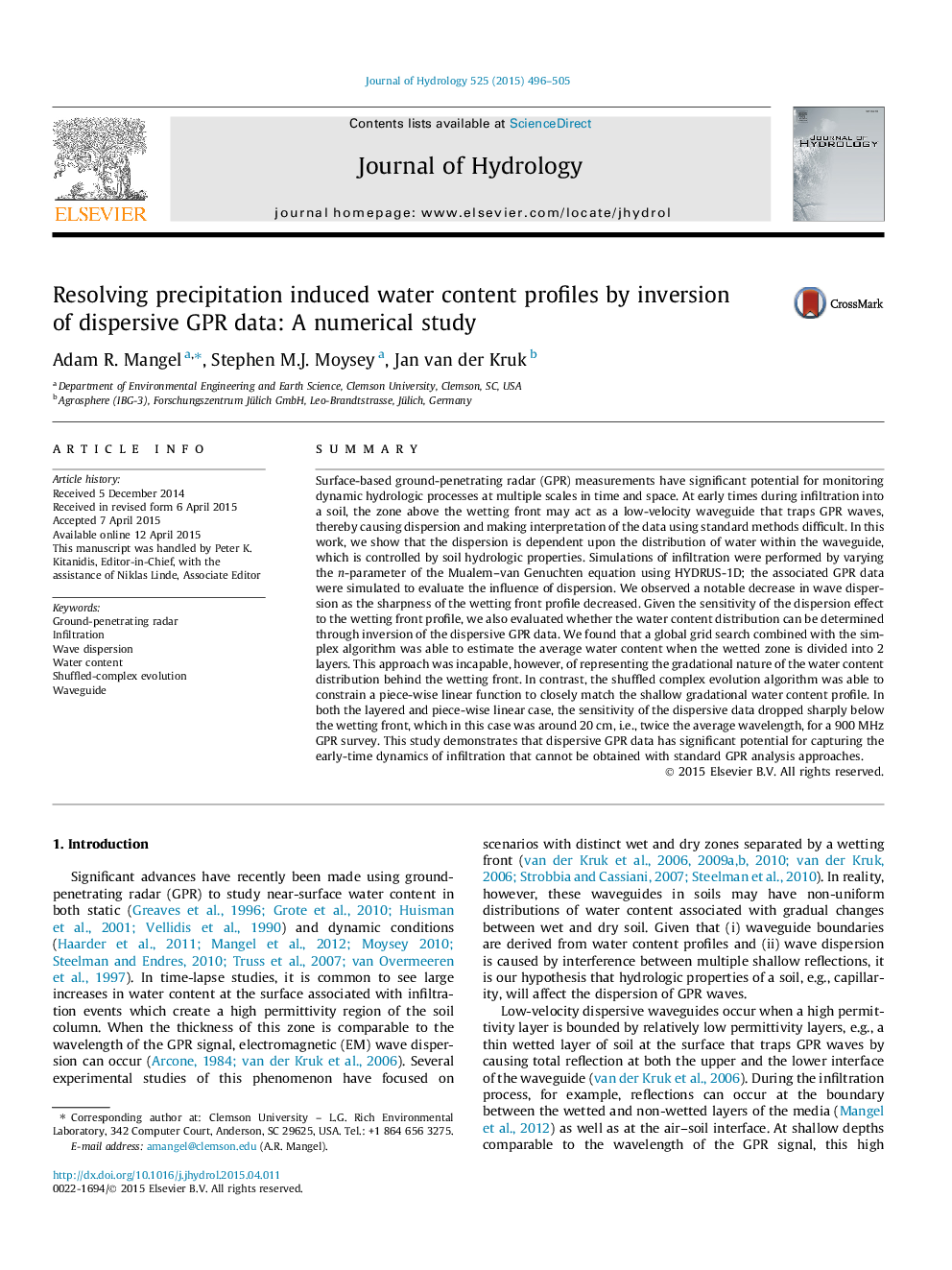| کد مقاله | کد نشریه | سال انتشار | مقاله انگلیسی | نسخه تمام متن |
|---|---|---|---|---|
| 6410640 | 1629925 | 2015 | 10 صفحه PDF | دانلود رایگان |

- Distribution of water in precipitation-induced waveguides impacts GPR dispersion.
- Dispersion can be used to resolve water content profiles of dispersive waveguides.
- Effective layer models cannot describe the gradational nature of the profiles.
- Piece-wise linear models better explain the data and the water content distribution.
SummarySurface-based ground-penetrating radar (GPR) measurements have significant potential for monitoring dynamic hydrologic processes at multiple scales in time and space. At early times during infiltration into a soil, the zone above the wetting front may act as a low-velocity waveguide that traps GPR waves, thereby causing dispersion and making interpretation of the data using standard methods difficult. In this work, we show that the dispersion is dependent upon the distribution of water within the waveguide, which is controlled by soil hydrologic properties. Simulations of infiltration were performed by varying the n-parameter of the Mualem-van Genuchten equation using HYDRUS-1D; the associated GPR data were simulated to evaluate the influence of dispersion. We observed a notable decrease in wave dispersion as the sharpness of the wetting front profile decreased. Given the sensitivity of the dispersion effect to the wetting front profile, we also evaluated whether the water content distribution can be determined through inversion of the dispersive GPR data. We found that a global grid search combined with the simplex algorithm was able to estimate the average water content when the wetted zone is divided into 2 layers. This approach was incapable, however, of representing the gradational nature of the water content distribution behind the wetting front. In contrast, the shuffled complex evolution algorithm was able to constrain a piece-wise linear function to closely match the shallow gradational water content profile. In both the layered and piece-wise linear case, the sensitivity of the dispersive data dropped sharply below the wetting front, which in this case was around 20Â cm, i.e., twice the average wavelength, for a 900Â MHz GPR survey. This study demonstrates that dispersive GPR data has significant potential for capturing the early-time dynamics of infiltration that cannot be obtained with standard GPR analysis approaches.
Journal: Journal of Hydrology - Volume 525, June 2015, Pages 496-505